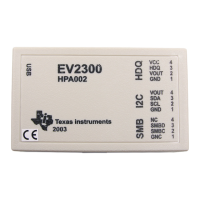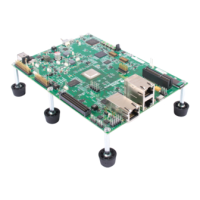Periodic Function Manager (PRD) and the System Clock
4-78
The maximum ready-to-complete time is a good measure of how close the
system is to potential failure. The closer a software interrupt’s maximum
ready-to-complete time is to its period, the more likely it is that the system
cannot survive occasional bursts of activity or temporary data-dependent
increases in computational requirements. The maximum ready-to-complete
time is also an indication of how much headroom exists for future product
enhancements (which invariably require more MIPS).
Note:
DSP/BIOS does not implicitly measure the amount of time each software
interrupt takes to execute. This measurement can be determined by
running the software interrupt in isolation using either the simulator or the
emulator to count the precise number of execution cycles required.
It is important to realize even when the sum of the MIPS requirements of all
routines in a system is well below the MIPS rating of the DSP, the system can
not meet its real-time deadlines. It is not uncommon for a system with a CPU
load of less than 70% to miss its real-time deadlines due to prioritization
problems. The maximum ready-to-complete times monitored by DSP/BIOS,
however, provide an immediate indication when these situations exist.
When statistics accumulators for software interrupts and periodic objects are
enabled, the host automatically gathers the count, total, maximum, and
average for the following types of statistics:
❏ SWI. Statistics about the period elapsed from the time the software
interrupt was posted to its completion.
❏ PRD. The number of periodic system ticks elapsed from the time the
periodic function is ready to run until its completion. By definition, a
periodic function is ready to run when period ticks have occurred, where
period is the period parameter for this object.
You can set the units for the SWI completion period by setting CLK Manager
parameters. This period is measured in instruction cycles if the CLK module’s
Use high resolution time for internal timings parameter is set to True (the
default). If this CLK parameter is set to False, SWI statistics are displayed in
units of timer interrupt periods. You can also choose milliseconds or
microseconds for Statistics Units on the Statistics Data tool.
For example, if the maximum value for a PRD object increases continuously,
the object is probably not meeting its real-time deadline. In fact, the maximum
value for a PRD object should be less than or equal to the period (in system
ticks) property of this PRD object. If the maximum value is greater than the
period, the periodic function has missed its real-time deadline.

